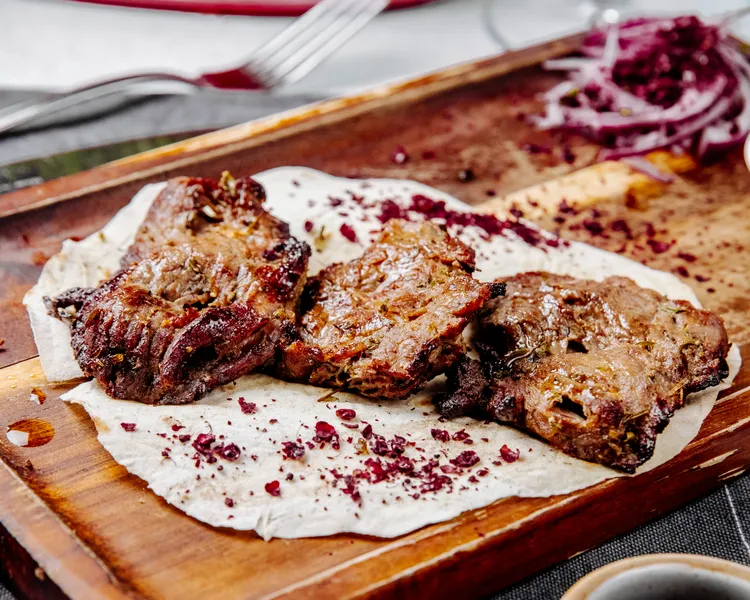How to Rescue Over-Salted Food (and Other Kitchen Fixes)
Your full-length guide to turning kitchen mishaps into delicious victories - because every cook deserves a second chance.

Why Over-Salting Happens (And Why It’s Not the End)
Let’s face it - we’ve all been there: a dish simmers away, the aromas rise, you taste a spoonful… and boom! Suddenly it tastes way saltier than you expected. It’s frustrating, yes, but it doesn’t mean your meal is ruined. With the right strategies, many over-salted dishes can be rescued.
Here’s why it happens:
Liquids reduce during cooking, concentrating salt (and flavour) until things go “too far”.
Using already-salted ingredients (e.g., salted stock, canned broth, soy sauce) without accounting for it often leads to excess.
Measuring salt by “a pinch” or eyeballing it - especially if changing salt type (table salt vs kosher) - can throw off the balance.
The good news? You can fix these dishes - often without starting from scratch. This guide will walk you through the best methods, when and how to use them, and preventive steps so you’re less likely to oversalt next time.
The Quick Fixes: Top Methods for Salvaging Over-Salted Food
Here are the most effective “rescue” techniques - start with these when you realise things are too salty:
1. Dilute with unsalted liquid
If your dish is mostly liquid (soup, stew, sauce), adding unsalted broth, water, or milk/cream will spread the salt over a larger volume and reduce its impact.
After adding liquid, if the texture’s too thin, gently simmer to reduce again or add a thickener (e.g., roux, cornstarch slurry) without adding more salt.
2. Add more neutral ingredients (bulk)
Stretch the dish by introducing additional unsalted components: more vegetables, cooked rice/pasta, beans, or extra meat (unsalted) can absorb some of the excess seasoning.
If you added too much salt to a casserole or hearty dish, consider doubling it (adding identical unstressed proportions) and then re-seasoning carefully.
3. Balance with acidity
Acidic elements (lemon juice, vinegar, tomatoes) don’t remove salt but they shift the taste profile so the salt stands out less.
Add a splash, taste, and adjust slowly - you don’t want to end up with a distinctly sour dish.
4. Use creaminess/dairy
Dairy (milk, cream, yogurt, sour cream) works because the fats and proteins coat your tongue and mitigate the salty perception.
This is excellent for creamy sauces, soups, curries or if the dish allows a dairy finish.
5. Add a touch of sweetness
A very small amount of sugar, honey or maple syrup can help round out sharp saltiness.
Begin with about ½ tsp and taste - don’t over-sweeten. The goal is balance, not dessert.
6. Pair with plain sides
If your main dish ended up too salty and you can’t modify it much (e.g., grilled meat), serve it alongside bland or under-seasoned sides: plain rice, mashed potatoes (lightly salted), steamed vegetables. This way each bite is tempered by something neutral.
When Some “Fixes” Don’t Work (or Work Less Well)
It’s worth knowing which tricks are less reliable or have limitations:
The “raw potato in the pot” myth: Pop a raw potato into salty soup/stewe and it’ll magically pull out the salt? Unfortunately, not really. Studies show the potato absorbs liquid but doesn’t significantly reduce salt concentration.
If the dish is very small (single roast, piece of fish), there may not be enough leeway to dilute without changing the character of the dish. In these cases, repurposing the salted component may be the better move (see next section).
What To Do With Over-Salted Solids or Dishes That Can’t Be Diluted
Some items don’t lend themselves easily to dilution: e.g., a heavily salted grilled steak, over-seasoned baked pasta, or fish fillet. Here’s what to do:
Rinse lightly: For meats or vegetables with overly salty seasoning on the surface (e.g., heavily salted seasoning or brine), you can quickly rinse under warm water and pat dry before continuing cooking.
Transform it: Use the over-salted item as a component in a new dish. For example: shred the meat and turn it into a salad, taco filling, hash, or stir-fry with fresh unsalted ingredients - distributing the saltiness over more volume.
Reset flavour profile with accompaniment: Serve the salty meat with very bland sides and a creamy, acidic, or sweet sauce to balance each bite. For example, crispy salty chicken with yogurt-mint sauce and simple steamed rice.
Don’t beat yourself up: A kitchen misstep isn’t a disaster - it’s an opportunity to get creative.
Preventing Over-Salting in the First Place
Of course, it’s even better to avoid the problem altogether. Here are best practices to keep your salt levels in check:
Taste as you go: Don’t wait until the end to taste - test at various stages so you can adjust gradually.
Use low- or no-sodium base ingredients: Choose low-sodium broths, unsalted butter, reduced-salt soy sauce etc. That gives you more control.
Measure salt carefully: Especially when switching between salt types: table salt, sea salt, kosher salt - they vary in salinity by volume.
Season in stages and consider reduction: If your dish will reduce (e.g., simmering down), add salt gradually because concentration will increase.
Remember hidden salt: Processed ingredients (canned tomatoes, stocks, cured meats, sauces) often contain salt - factor that in.
Serve plain sides: Having rice, bread, or plain veggies on hand can help balance the entire plate.
A “Kitchen Fixes” Checklist
Here’s a handy list you can keep near your stove for those “uh-oh” moments:
Taste → decide how bad the salt issue is.
If a liquid dish: add unsalted liquid OR increase volume with veggies/grains.
Introduce balancing flavours: acid (lemon/vinegar), sweet (tiny sugar/honey), creamy (dairy or non-dairy alternative).
If a solid dish: can it be rinsed, repurposed or served with neutral sides?
Avoid the “quick-fix” myths like relying solely on raw potatoes.
Once fixed, taste again - adjust one more time (reduce acidity or sweetness if needed).
Learn from it: note how much salt you used, how the dish reduced, and tweak next time.
Real-Life Example: Fixing an Over-Salted Vegetable Stew
Let’s walk through a scenario:
Problem: You made a vegetable stew. Originally fine. You used salted vegetable broth and added “a pinch” of salt. After simmering for 45 minutes it tastes far too salty.
Solution steps:
Taste and identify that the salt flavour dominates.
Add 1 cup of unsalted broth or water to dilute.
Introduce extra chopped zucchini and white beans (unsalted) to increase volume.
Add a splash of lemon juice for acidity.
If you like, stir in ½ cup of plain yogurt for creaminess (if it fits the flavour profile).
Taste again - if still salty but less offensive, serve with plain rice or crusty bread to round the meal.
Outcome: The stew is still the base you intended, the flavour remains rich, and you didn’t waste time or ingredients.
Over-salting is one of the most common kitchen slip-ups - but it doesn’t mean you need to start over. With the right approach - quick dilution, adding neutral bulk, balancing flavours, and sometimes repurposing - you can salvage your dish and even learn from the experience.
Keep the mindset that cooking is a journey. Mistakes aren’t failures; they’re opportunities to get creative and improve. The next time you reach for the salt shaker, you’ll be more aware - and if you overshoot, you’ve got the tools to fix it.









